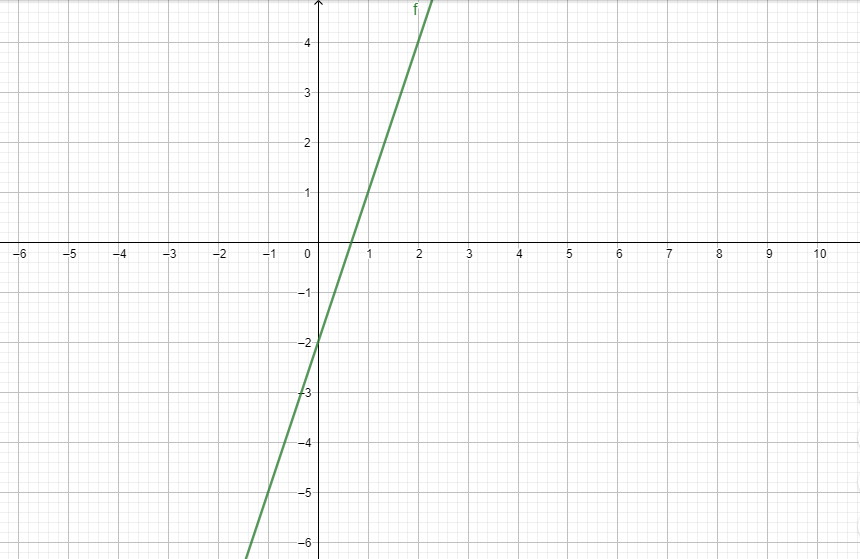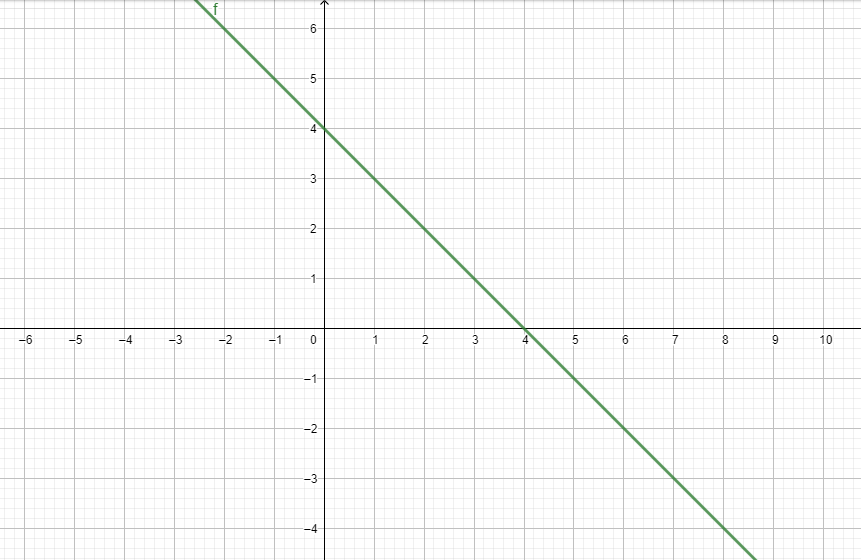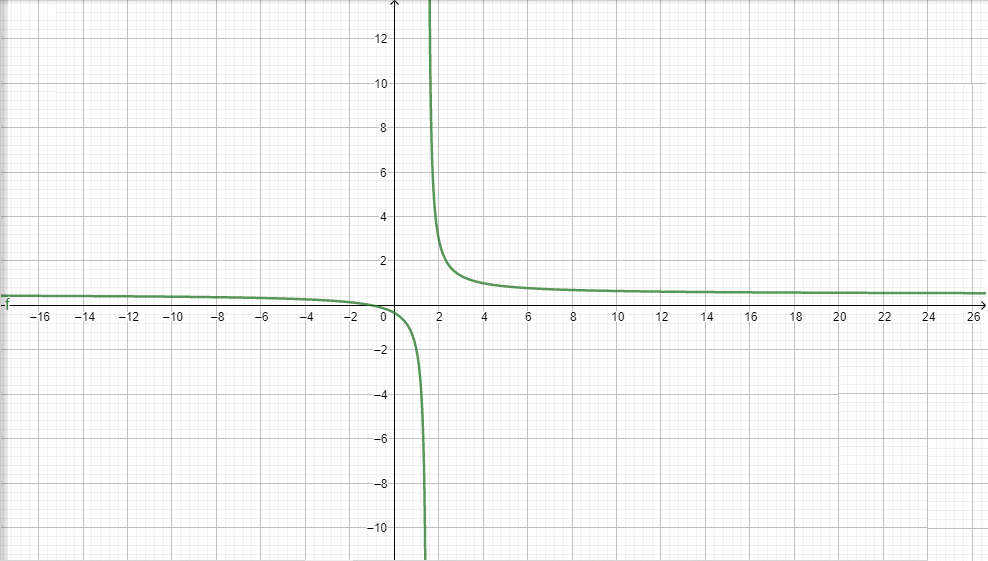
If $f,g:R \to R$ be defined respectively by$f(x) = x + 1$and $g(x) = 2x - 3$, find $f + g$,$f - g$and, $\dfrac{f}{g}$
Answer
575.7k+ views
Hint: As the functions \[f\left( x \right)\]and\[\;g\left( x \right)\]are defined in R then their addition and subtraction functions will also be defined in R, but for their division function first we’ll define the domain for the function in the denominator, then will after dividing we’ll get the value of the function.
Complete step-by-step answer:
Given data: $f,g:R \to R$
$f(x) = x + 1$
$g(x) = 2x - 3$
We know that the function \[f\left( x \right)\] and \[\;g\left( x \right)\] are defined in R, i.e., the domain of both the functions is complete set R.
So the addition and the subtraction operation are possible for f and g
Therefore, $(f + g)(x) = x + 1 + 2x - 3$
$ = 3x - 2$
$\therefore (f + g)(x) = 3x - 2$
And it is defined in R
i.e. the domain of $(f + g)(x) = ( - \infty ,\infty )$
And, $(f - g)(x) = x + 1 - (2x - 3)$
$ = x + 1 - 2x + 3$
$\therefore (f - g)(x) = 4 - x$
And it is defined in R
i.e. the domain of $(f - g)(x) = ( - \infty ,\infty )$
Now if we have to find $\dfrac{f}{g}$then$g(x) \ne 0$
i.e. $2x - 3 \ne 0$
adding 3 both sides
$ \Rightarrow 2x \ne 3$
Dividing 2 into both sides
$ \Rightarrow x \ne \dfrac{3}{2}$
therefore$\dfrac{f}{g}(x)$will be defined in $R - \left\{ {\dfrac{3}{2}} \right\}$
i.e. the domain of$\dfrac{f}{g}(x) = ( - \infty ,\dfrac{3}{2}) \cup (\dfrac{3}{2},\infty )$
the values of $\dfrac{f}{g}(x) = \dfrac{{x + 1}}{{2x - 3}}$
Note: Remember to find the domain of the function.
In the above solution, we have also mentioned the domain of the resulting functions i.e. $f + g$,$f - g$and, $\dfrac{f}{g}$, we can also show those in the graphical form as
$(f + g)(x) = 3x - 2$

$(f - g)(x) = 4 - x$

$\dfrac{f}{g}(x) = \dfrac{{x + 1}}{{2x - 3}}$

Complete step-by-step answer:
Given data: $f,g:R \to R$
$f(x) = x + 1$
$g(x) = 2x - 3$
We know that the function \[f\left( x \right)\] and \[\;g\left( x \right)\] are defined in R, i.e., the domain of both the functions is complete set R.
So the addition and the subtraction operation are possible for f and g
Therefore, $(f + g)(x) = x + 1 + 2x - 3$
$ = 3x - 2$
$\therefore (f + g)(x) = 3x - 2$
And it is defined in R
i.e. the domain of $(f + g)(x) = ( - \infty ,\infty )$
And, $(f - g)(x) = x + 1 - (2x - 3)$
$ = x + 1 - 2x + 3$
$\therefore (f - g)(x) = 4 - x$
And it is defined in R
i.e. the domain of $(f - g)(x) = ( - \infty ,\infty )$
Now if we have to find $\dfrac{f}{g}$then$g(x) \ne 0$
i.e. $2x - 3 \ne 0$
adding 3 both sides
$ \Rightarrow 2x \ne 3$
Dividing 2 into both sides
$ \Rightarrow x \ne \dfrac{3}{2}$
therefore$\dfrac{f}{g}(x)$will be defined in $R - \left\{ {\dfrac{3}{2}} \right\}$
i.e. the domain of$\dfrac{f}{g}(x) = ( - \infty ,\dfrac{3}{2}) \cup (\dfrac{3}{2},\infty )$
the values of $\dfrac{f}{g}(x) = \dfrac{{x + 1}}{{2x - 3}}$
Note: Remember to find the domain of the function.
In the above solution, we have also mentioned the domain of the resulting functions i.e. $f + g$,$f - g$and, $\dfrac{f}{g}$, we can also show those in the graphical form as
$(f + g)(x) = 3x - 2$

$(f - g)(x) = 4 - x$

$\dfrac{f}{g}(x) = \dfrac{{x + 1}}{{2x - 3}}$

Recently Updated Pages
Master Class 12 Economics: Engaging Questions & Answers for Success

Master Class 12 Maths: Engaging Questions & Answers for Success

Master Class 12 Biology: Engaging Questions & Answers for Success

Master Class 12 Physics: Engaging Questions & Answers for Success

Basicity of sulphurous acid and sulphuric acid are

Master Class 12 Business Studies: Engaging Questions & Answers for Success

Trending doubts
What are the major means of transport Explain each class 12 social science CBSE

Which are the Top 10 Largest Countries of the World?

Draw a labelled sketch of the human eye class 12 physics CBSE

How much time does it take to bleed after eating p class 12 biology CBSE

Explain sex determination in humans with line diag class 12 biology CBSE

Differentiate between homogeneous and heterogeneous class 12 chemistry CBSE




